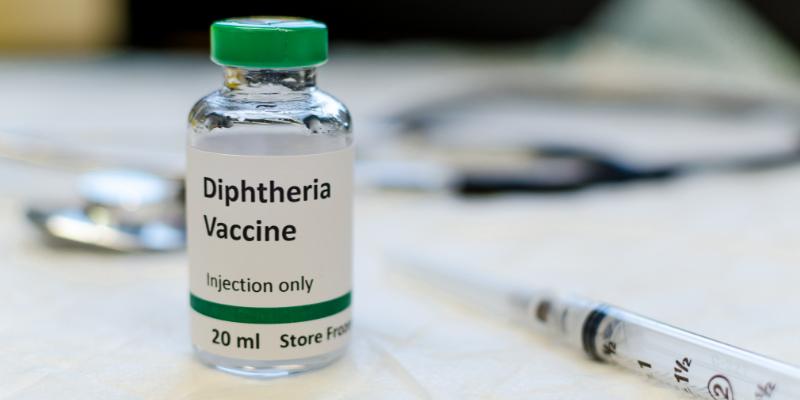Diphtheria Causes, Symptoms, and Treatment Options: A Complete Guide
Diphtheria is a severe bacterial infection that can affect the nose, throat, and sometimes the skin. Though it was once a leading cause of death in children, it is now largely preventable thanks to vaccinations. However, the infection still poses a significant risk in some parts of the world, especially with low immunization rates. Knowing the causes, symptoms, and treatment options for diphtheria is essential for early detection and prevention.
In this complete guide, we will explore the various aspects of diphtheria, helping you understand how to spot it, how it spreads, and how it can be treated.
What Is Diphtheria?
Diphtheria is a contagious infection caused by Corynebacterium diphtheriae. This bacterium produces toxins that can damage tissues in the body, leading to symptoms such as fever, sore throat, and difficulty breathing. In severe cases, the infection can affect the heart and nerves. The bacteria primarily spread through respiratory droplets when an infected person coughs or sneezes. Although diphtheria is rare in countries with high vaccination rates, it remains a significant public health threat in regions where vaccines are not widely available.
Causes of Diphtheria:
The primary cause of diphtheria is infection with Corynebacterium diphtheriae. The bacteria can spread in the following ways:
- Airborne Transmission: When an infected person coughs, sneezes, or talks, tiny droplets containing the bacteria are released into the air and can be inhaled by others. This is the most common way the infection spreads.
- Direct Contact: Diphtheria can also spread through contact with an infected person's skin or mucous membranes, especially with open wounds or sores.
- Contaminated Objects: Sharing personal items like towels, drinking glasses, or eating utensils with infected people can also spread the bacteria.
While diphtheria was once a major problem in developed countries, widespread vaccination programs have significantly reduced its prevalence. However, the disease can still spread rapidly in areas where vaccination coverage is not optimal.
Symptoms of Diphtheria:
The symptoms of diphtheria typically appear within two to five days after exposure to the bacteria. Early signs can be mild but can worsen quickly. Common symptoms include:
- Sore Throat: A sore throat is often one of the first symptoms of diphtheria. It can be severe and make swallowing difficult.
- Fever: A mild fever may accompany the sore throat, which can increase as the infection progresses.
- Swollen Lymph Nodes: Swelling in the neck, known as "bull neck," is a hallmark of diphtheria and can cause difficulty in breathing.
- White or Gray Coating: A thick, gray, or white coating can develop on the throat and tonsils. This membrane can obstruct the airways and make breathing difficult.
- Difficulty Breathing: As the infection spreads, the airway can become blocked, leading to respiratory distress. This is particularly dangerous in children and can cause suffocation if not treated.
- Weakness: Generalized weakness and fatigue are common as the infection progresses.
- Nerve Damage: In severe cases, the diphtheria toxin can affect the nerves, causing symptoms like difficulty swallowing, drooping eyelids, or paralysis.
How Diphtheria Spreads?
Diphtheria spreads through respiratory droplets and close personal contact with an infected person. The bacteria can live in an infected person's throat, nose, or skin, even if they don't show symptoms. This means a person can still spread the infection without knowing they are contagious. Diphtheria is most often spread in crowded conditions where individuals are nearby, such as in schools, homes, or healthcare facilities.
People who have been exposed to diphtheria and have not been vaccinated are at the highest risk. That is why vaccination plays a crucial role in controlling the spread of the disease.
Treatment Options for Diphtheria:
Diphtheria is a medical emergency and requires immediate treatment. Early intervention can reduce the severity of the disease and prevent complications. The primary treatments for diphtheria include:
- Antitoxin:
The diphtheria antitoxin neutralizes the diphtheria toxin produced by the bacteria. This is administered as soon as possible to prevent the spread of the toxin throughout the body. The antitoxin must be given early in the infection, as it may not be effective if administered too late.
- Antibiotics:
Antibiotics, such as penicillin or erythromycin, kill the bacteria causing the infection. These antibiotics help stop the spread of the bacteria to others and treat the disease. Antibiotics are often given alongside the diphtheria antitoxin to prevent further complications.

- Hospitalization:
Because diphtheria can cause severe respiratory distress, patients often need to be hospitalized, particularly if they experience breathing difficulties or nerve damage. Sometimes, patients may require a breathing tube to assist with ventilation.
- Supportive Care:
In addition to antitoxin and antibiotics, supportive care such as intravenous fluids, pain management, and oxygen therapy may be required to stabilize the patient.
Prevention of Diphtheria:
The best way to prevent diphtheria is through vaccination. The diphtheria vaccine is usually given as part of the DTP vaccine (Diphtheria, Tetanus, and Pertussis) in childhood. Booster shots are recommended every 10 years to maintain immunity.
Other preventive measures include:
- Good Hygiene Practices: Regular handwashing, covering coughs and sneezes, and avoiding close contact with infected individuals can reduce the spread of diphtheria.
- Vaccination of Close Contacts: People who have been in close contact with someone diagnosed with diphtheria may need to receive a booster shot to prevent further spread.

Key Factors to Watch for in Diphtheria:
Several factors increase the risk of contracting diphtheria:
- Unvaccinated Individuals: People who have not received the diphtheria vaccine are at the highest risk, especially in areas with low vaccination coverage.
- Crowded Conditions: Environments where people are in close contact, such as schools or healthcare facilities, can facilitate the spread of diphtheria.
- Immune System Weakness: Individuals with weakened immune systems, such as the elderly or those with chronic illnesses, may be more susceptible to severe diphtheria.
Conclusion
Diphtheria is a severe bacterial infection that requires immediate attention. Recognizing its symptoms early can be life-saving, as timely treatment can significantly reduce the risk of severe complications. Vaccination remains the most effective method of prevention, protecting individuals and communities from outbreaks.
If you or someone you know exhibits symptoms of diphtheria, seek medical attention immediately to receive the necessary treatments. Ensure your vaccinations are up-to-date, and encourage those around you to do the same.












